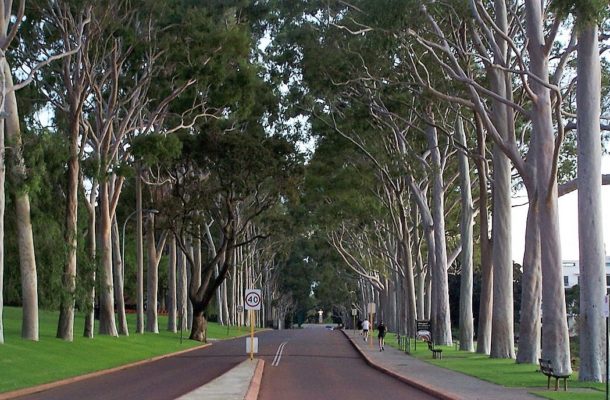How forests support sustainable cities

March 21st has been celebrated worldwide as International Forests Day since it was first declared in 2012 by the United Nations General Assembly. The Day celebrates and raises awareness of the importance of all types of forests.
The theme for 2018 is Forests and Sustainable Cities.
Trends in urban planning and architecture are bringing more and more trees into our cities causing reduction in energy use by improving the local climate, storing atmospheric carbon, reducing fine particulates in the air and reducing noise pollution.
Members of the Institute of Foresters of Australia are intimately involved in advising local governments across the country on how to incorporate trees, particularly native species into urban environments.
We also understand that sustainably managed forests around urban areas can also benefit biodiversity and habitat while providing the fuel and fibre needed in today’s society.
It is often said that the 21st Century is the century of wood with its benefits as a construction material now being realised worldwide and the Institute looks forward to a time when timber buildings dot our skyline with trees growing freely between them.
This global celebration of forests provides a platform to raise awareness of the importance of all types of woodlands and trees, and celebrate the ways in which they sustain and protect us.
Why cities need trees
- Forests and trees store carbon, which helps mitigate the impacts of climate change in and around urban areas.
- Trees also improve the local climate, helping to save energy used for heating by 20-50 percent.
- Strategic placement of trees in urban areas can cool the air by up to 8 degrees Celsius, reducing air conditioning needs by 30 percent.
- Urban trees are excellent air filters, removing harmful pollutants in the air and fine particulates.
- Trees reduce noise pollution, as they shield homes from nearby roads and industrial areas.
- Local populations use the fruits, nuts, leaves and insects found in urban trees to produce food and medicines for use in the home, or as a source of income.
- Wood fuel sourced from urban trees and planted forests on the outskirts of cities provides renewable energy for cooking and heating, which reduces pressures on natural forests and our reliance on fossil fuels.
- Forests in and around urban areas help to filter and regulate water, contributing to high-quality freshwater supplies for hundreds of millions of people. Forests also protect watersheds and prevent flooding as they store water in their branches and soil.
- Well-managed forests and trees in and around cities provide habitats, food and protection for many plants and animals, helping to maintain and increase biodiversity.
- Forests in cities and surrounding areas generate tourism, create tens of thousands of jobs and encourage city beautification schemes, building dynamic, energetic and prosperous green economies.
- Urban green spaces, including forests, encourage active and healthy lifestyles, improve mental health, prevent disease, and provide a place for people to socialize.
Later this year, the Institute of Foresters of Australia and the Australian Forest Growers are holding a combined conference in Canberra called: Forests for healthy cities, farms and people.
This builds on the UN theme for International Forests Day and from 2-5 September international and local experts will speak about the increasing importance of urban forests in our growing cities, the continuing importance of trees on farms, and the links between healthy tree-scapes and healthy people.
The theme of the 2018 Joint IFA-AFG Conference speaks to the increasing importance of urban forests in our growing cities, the continuing importance of trees on farms for productive and sustainable rural landscapes, and our increasing understanding of the links between healthy treescapes and healthy people.
These issues are not new for foresters, but it has often been challenging to advance them in the national agenda. In our rural landscapes, it has been difficult to capitalise on the foundations established by initiatives such as Landcare and the Farm Forestry Program while in our cities, both urban sprawl and densification are impacting on familiar treescapes that deliver a myriad of services to the majority of Australia’s population.
Yet research is increasingly demonstrating the value of trees and treed landscapes to both human and landscape health.
Happy International Forests Day – celebrate by hugging a tree.
Bob Gordon is the National President of the Institute of Foresters of Australia, a professional body with over 1100 members engaged in all branches of forest management and conservation in Australia.












